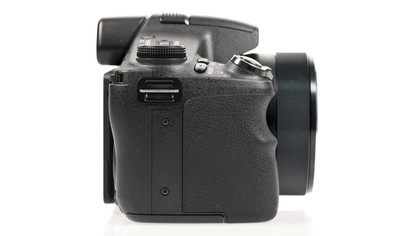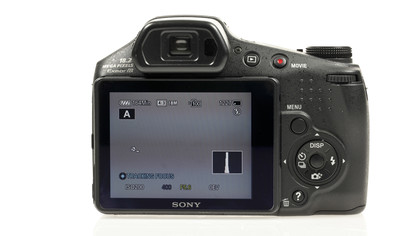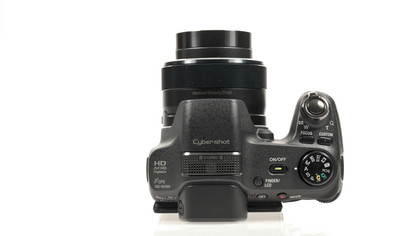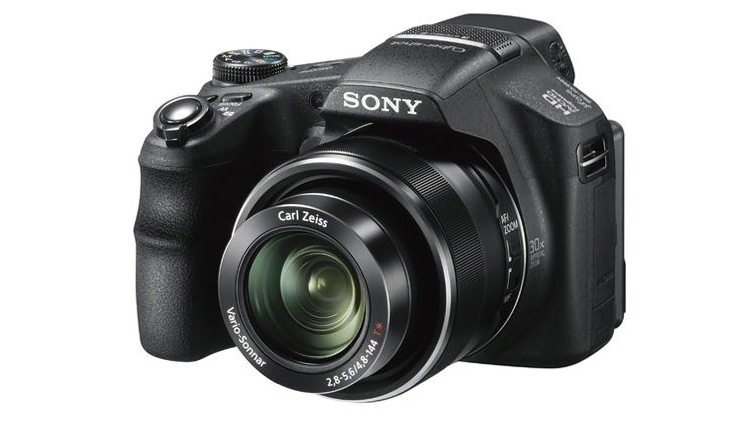Why you can trust TechRadar
First impressions are very favourable. The Sony Cyber-Shot DSC-HX200V feels commendably solid when gripped, weighing a junior DSLR-like 583g.
That's with a choice of SD or Memory Stick Pro Duo media plus lithium ion rechargeable battery inserted at the base.
As with Sony's entry-level Alpha DSLRs, there's just enough space here to curl three fingers around the rubberised handgrip, while the forefinger hovers above the raised shutter release at the top.

This is itself encircled by a lever for operating the zoom, with the alternative being to manually twist the provided lens ring, which prompts a mechanised zoom in or out. Doing this with the left hand feels particularly comfortable if you're already steadying the camera in both hands.
Showing its enthusiast appeal, on the Sony Cyber-Shot DSC-HX200V we're blessed with the choice of a crystal clear tilt-up or angle down LCD display plus an electronic viewfinder (EVF); the latter ranged directly above the former on the backplate.
The EVF has a built-in eye sensor that activates the display when it detects the pupil of your eye, and turns it off - and the LCD below on - when you move away. There's also a dedicated button for manually switching between the two. For us the larger, higher resolution LCD (921k dots as opposed to 202k for the EVF) won out.

The battery lasts longer, however, if using the EVF, enabling you to take 490 shots rather than 450. But both these stats are impressive, anyway.
With a ridged edge for easier purchase and commendably stiff action, a shooting mode dial is provided, showcasing the creative quartet of Program, Shutter Priority, Aperture Priority and Manual settings, along with two auto modes. These include the automatic exposure adjusting and image enhancing Superior Auto, plus a smattering of scene, 3D and panorama shooting options.
There's also a dedicated video mode setting on this top plate dial, with a small 'movie' record button adjacent to an equally teeny playback button on the backplate.

Generally controls fall readily under finger or thumb and the layout, while busy, feels spacious enough. Additionally there's a DSLR-like command/jog dial situated where the thumb rests on the backplate - and this is how the user adjusts the likes of ISO, aperture and shutter settings.
Having said that, it required us to forage through the built-in help manual to discover that fact, and a dedicated ISO button would have been more helpful still.
Scrolling through the options using this dial and then implementing them with a full press is fiddly and eats up time.

When not wrestling wild bears or leaping tall buildings in a single bound, Gavin Stoker can be found editing British Photographic Industry News, the UK's longest running and only photo trade title. He has over 25 years of camera testing and reviewing under his belt.
